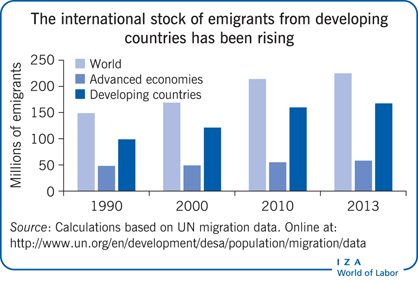Elevator pitch
International labor mobility has resulted in sweeping socio-economic changes in many developing countries. When a family member migrates for work and sends back remittances, household income may rise, and with it investment in children’s schooling. Emigration flows may also alter local labor market conditions and wage rates, which can in turn affect children’s labor supply. Whether there is more or less child labor as a result of migration may depend on the skill composition of the migrants and on how family members respond to wage changes.

Key findings
Pros
Through remittances, labor migration may provide additional income to household members left behind, which may reduce the household’s need for child labor.
Wages in the home labor market may rise following labor outflows, raising the income of some adult workers and thus reducing the need for their children to work.
Since child labor is more common in poor households that depend on unskilled labor, the positive income effects will be stronger when the share of unskilled labor is higher among migrants than stayers.
Cons
Migration of some family members withdraws human capital and labor from the sending household, a loss that may be compensated for by increasing child labor in the home and in the labor market.
Adults may work less in response to a migration-induced rise in local wages, potentially requiring their children to work more.
Depending on the skill composition of migrants and on the responsiveness of the adult labor supply to wage changes, higher local wages may increase the incentives for children to work.